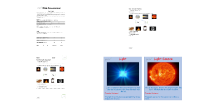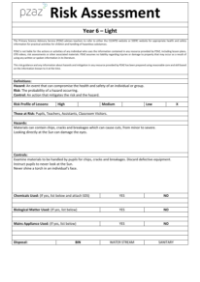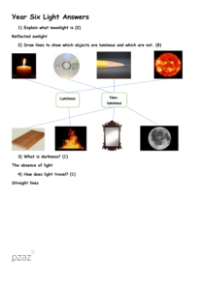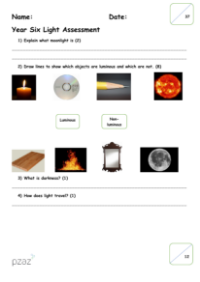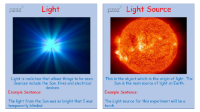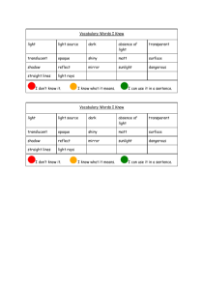Light - Knowledge Organisers
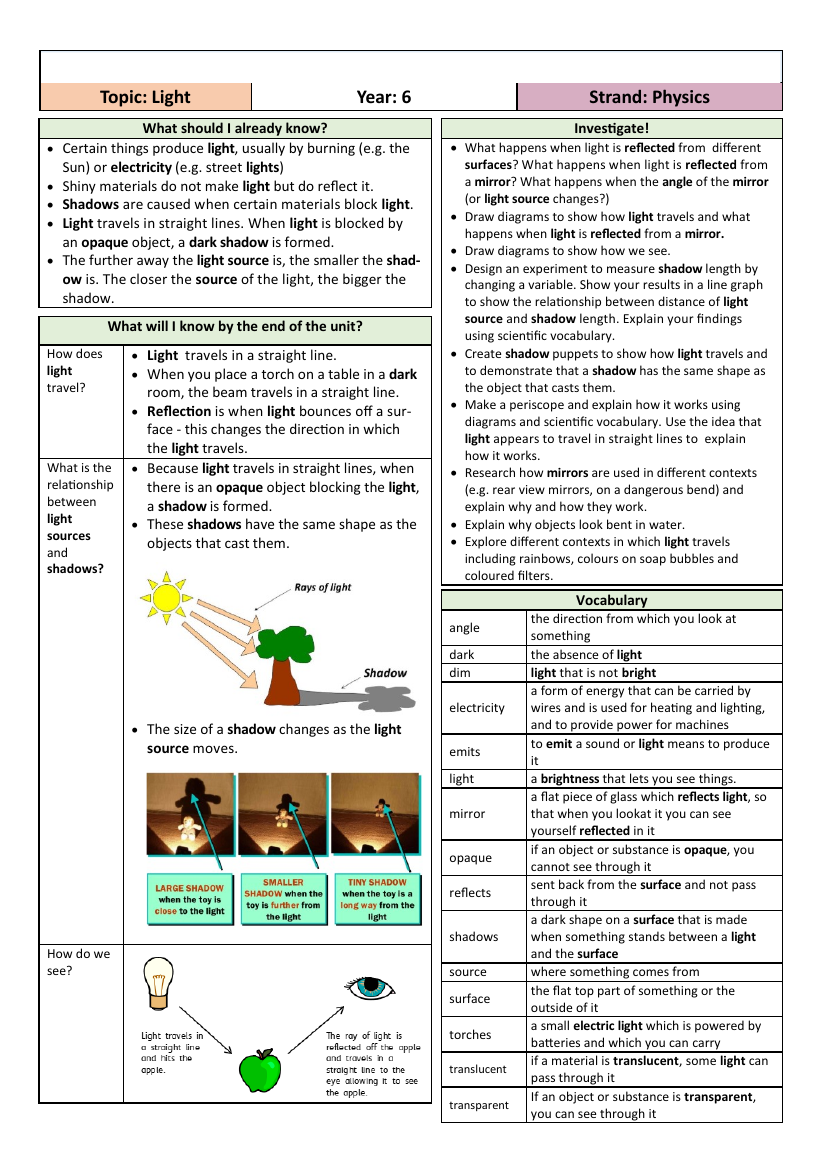
Science Resource Description
As part of the Year 6 Physics curriculum on the topic of light, students begin with a foundational understanding that light is produced by sources such as the Sun and street lights, and that it travels in straight lines. They learn that while shiny materials like mirrors reflect light, they do not produce it themselves. The formation of shadows is explained as the result of light being obstructed by opaque materials, with the size of the shadow varying depending on the distance from the light source. Key vocabulary includes terms such as 'opaque', 'reflects', 'translucent', and 'transparent', which describe the interaction between light and different materials. Students are also expected to understand the concept of angles as it pertains to the direction from which light is observed or reflected.
By the end of the unit, students will have a deeper comprehension of how light behaves. They will explore how light travels in a straight line and how it reflects off surfaces, changing direction. The relationship between light sources and shadows will be clear, with the understanding that shadows mimic the shape of the objects casting them and vary in size with the movement of the light source. Through practical investigations, such as using mirrors, creating shadow puppets, and designing experiments to measure shadow length, students will apply their knowledge and use scientific vocabulary to explain phenomena like the bending of light in water, how periscopes work, and the reasons behind the appearance of rainbows and colours on soap bubbles. They will also discover the practical uses of mirrors in everyday contexts and be able to articulate their findings and reasoning with scientific accuracy.

